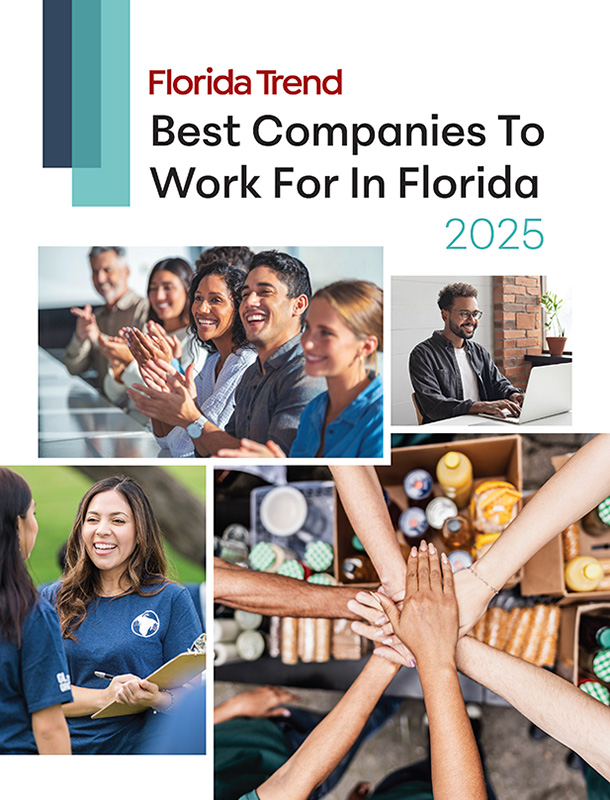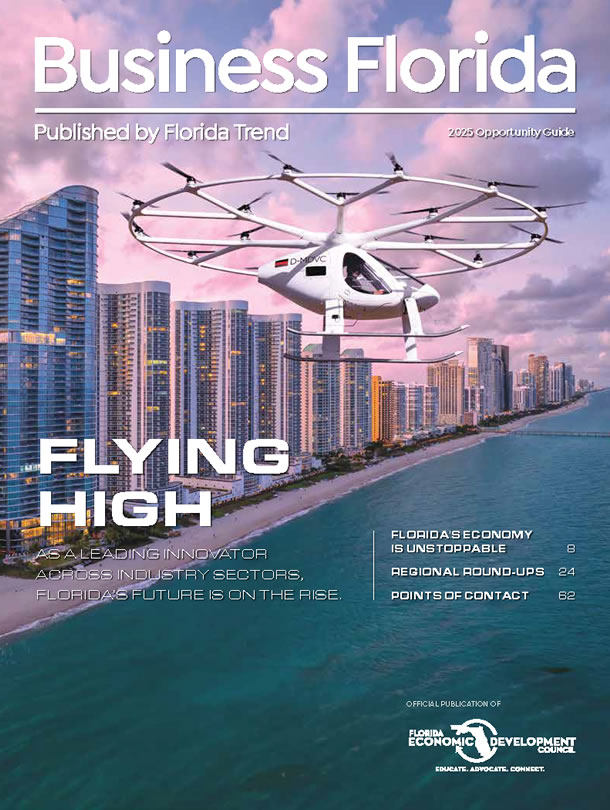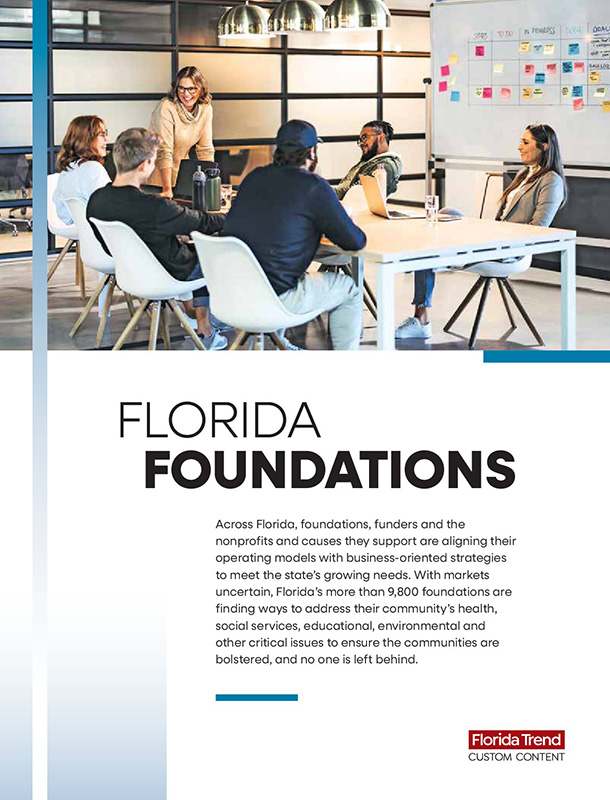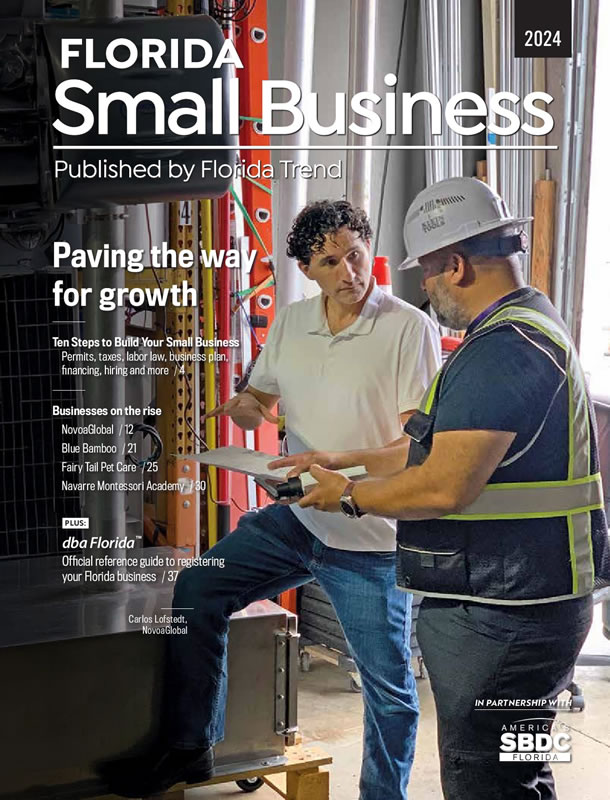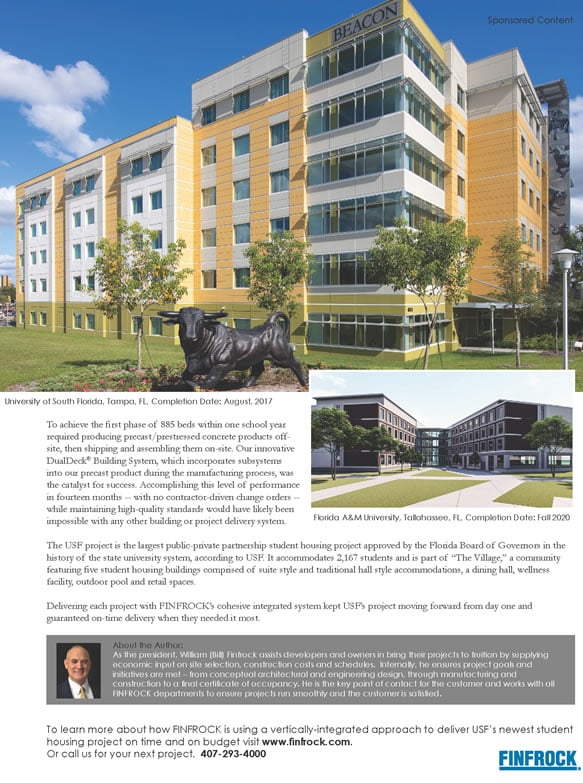Citrus processing plants are disappearing nearly as quickly as the groves. Of the 50 that operated in Florida in the 1950s, 18 remain -- many now owned by multinational corporations. Minute Maid, for example, has passed from the hands of its founder, the man who invented frozen concentrate, to the Coca-Cola Co., which sold Minute Maid's processing plants in Florida to Cutrale, part of a huge, privately held citrus company in Brazil.
With upward of 830,000 acres of trees that brought in more than $1.6 billion in cash receipts in 2000, citrus is still one of the state's top industries. But urbanization and globalization are quickly transforming the storied network of businesses that came to be known as Big Citrus. Accustomed to dominating the state's economy, landscape and politics, longtime Florida growers and processors now are either struggling to survive or selling out to real estate developers or the multinational juice makers that increasingly control the industry. "I'd say this is a darker cloud than we've ever been under," says second-generation grower Edward Smoak, 55, of Lake Placid.
Sweet history
For more than a century, the history of Big Citrus was written by freezes that pushed the industry southward. The industry migrated from the Jacksonville area in the 1890s to the Orlando region, which in the 1950s produced 40% of the state's oranges but now accounts for only 6%. A series of deadly freezes in the 1980s pushed the industry farther south to its present concentration around Lake Okeechobee. Today, the southwestern interior of the state produces 61% of Florida's orange crop.
Warmer growing areas, advancing crop science and new technologies have resulted in better yields from fewer acres. But the retreat into Florida's rural interior has come at a cost. While Floridians and tourists alike once could see, smell and sample fruit from nearly every major highway in the state, most groves now are far from population and tourist centers. With 84% of Floridians living in urban areas within 10 miles of the coast, many residents' most immediate contact with the industry has been via the aggressive canker eradication program that axed beloved backyard citrus trees in south Florida or pesticide spraying against the Med fly that outraged southwest Florida residents in the 1990s.
In the dining room of the historic Terrace Hotel in downtown Lakeland, where Northern citrus buyers once converged each winter, Andy LaVigne, CEO of the 55-year-old growers association Florida Citrus Mutual, worries over a glass of OJ that his industry's essential link to Florida's identity is in peril. "You drive through the Midwest, you see amber waves of grain. Vacation in Northern California, you see miles and miles of vineyards. Here, you used to see oranges. But you no longer see them. You really have to get off the beaten path to see production here, and that turns out to be a problem."
Along with losing the public relations battle, Big Citrus has lost the political grip it once had on Florida. For one, 21st century industry sectors such as high-tech and international trade have built up political muscle. Citrus, meanwhile, doesn't even dominate agriculture as it once did: Last year, the greenhouse shrubs used to landscape commercial and residential developments surpassed oranges as Florida's No. 1 agricultural commodity.
At the same time, the deaths of citrus barons such as Ben Hill Griffin, who peeled off campaign contributions as easily as he whisked politicians around the state in his helicopters, have left the political fate of the industry in the hands of a new generation. A few growers, such as state Rep. J.D. Alexander of Winter Haven and U.S. Rep. Adam Putnam of Bartow, still serve in Tallahassee and Washington. But urbanization has concentrated political power in the most populated counties of south, southwest and central Florida, leaving the growers and their friends less powerful -- and facing tough political issues that now play out on an international scale.
Global supply
While the spread of canker remains the greatest day-to-day peril to the industry, its long-term future in Florida hangs on the politics of global trade -- beginning in the state of Sao Paolo, Brazil.
The freezes that killed many Florida trees in the 1980s led to higher citrus prices that spurred major plantings in S?o Paulo. Aided by cheaper labor and lighter regulation, Brazil passed Florida a decade ago as the No. 1 citrus producer in the world. It now leads in global market share for orange juice, with roughly 50% to Florida's 35%. Today, the country produces more than twice as many boxes of oranges as Florida each year. Brazil's production continues to grow, while Florida's orange crop fell from 230 million boxes to 197 million this growing season.
In the past, a smaller Florida crop would have meant bigger profits for the state's growers. But the larger world supply has steadily deflated prices. "The price over the past several years has just not been there," says Ed Lassiter, a senior vice president for SunTrust Bank and manager of the bank's agribusiness division. Florida growers have been "able to get by -- but just barely."
A 29.7-cent-per-gallon tariff on imported OJ has helped Florida growers by keeping the cheaper Brazilian juice from the U.S. market. But Brazilian companies are eager to sell to Americans, the top OJ consumers on the planet. And they're insisting on the elimination of the tariff in ongoing negotiations over the creation of the Free Trade Area of the Americas (FTAA).
The FTAA, proposed more than a decade ago by former President George H.W. Bush, aims to bring 34 nations by 2005 into the largest free-trade zone in the world, stretching from the Arctic Circle to Tierra del Fuego. As Latin America's most populous nation, Brazil is a crucial player. Its insistence on major changes in U.S. agricultural policies, including the juice tariff, has become the most controversial aspect of the FTAA negotiations.
In Sao Paolo, Ademerval Garcia, president of the Brazilian Association of Citrus Growers, says that in addition to expanding opportunities for Brazilian growers and processors, eliminating the tariff would lower juice prices for consumers and result in greater efficiencies throughout the industry. "Tariffs distort markets, create privileges and breed inefficiency," he argues. "Tariff elimination -- all tariffs of all products for all countries -- is the American free trade speech."
Florida growers scoff at the idea that eliminating the tariff will benefit consumers. Brazil faces competition only from Florida and enjoys huge production-cost advantages. With no tariff, they say, the Brazilians will quickly put Florida out of business and monopolize the world market. "The Brazilians own the European market, and now they want ours," complains Squire Smith, a third-generation grower born and raised in Winter Haven, where he manages thousands of acres of groves. "They are bright, industrious, aggressive folks who know how to play the game politically. And in case I forgot to mention, they are incredibly wealthy."
In a series of meetings and correspondence with U.S. Trade Ambassador Robert Zoellick, Florida citrus industry representatives have repeatedly argued that the tariff reduction "is a life and death issue for Florida citrus," said Robert Buker Jr., former president of U.S. Sugar-owned Southern Gardens Citrus in Clewiston. Noting that citrus futures prices have been below the cost of production for the last two years, largely because of Brazilian imports, Buker wrote that "if we lose even one cent of the tariff, it will be a disaster. That is the commercial reality."
Consolidation at home
Regardless of the outcome of the tariff fight, other trends will continue to reshape the citrus industry in Florida. Consolidation within the domestic industry and an infusion of foreign capital are upending the state's traditional model of smaller, decentralized growers and processors, says Tom Spreen, a University of Florida agricultural economist who has studied Florida citrus for 15 years. Just 10 years ago, Florida was home to 27 juice-processing plants. Of the 18 remaining today, eight are operated by multinational corporations Cargill, Cutrale, LouisDreyfus and Citrosuco -- all heavily invested in Brazil as well. These companies now handle about half of all the oranges crushed in the state, Spreen says.
Some processors have decided that the best way to control costs and quality is to work only with large growers. Others have chosen to manage their own big groves rather than buy from smaller, independent growers. Southern Gardens has become one of Florida's largest growers with 3 million trees on 32,000 acres in Hendry County. Next door to the groves, the company operates a highly automated processing plant producing more than 120 million gallons of OJ a year.
Cutrale, a subsidiary of Brazil's Sucocitrico, which bought Minute Maid's processing plants, announced plans in 2001 to establish a 10,000-acre grove in Glades County. Environmental concerns blocked those plans. But the multinationals appear intent on achieving in Florida the vertical integration of growing and processing that has served them so well in South America.
Officials with Cutrale and other Florida-based subsidiaries of the Brazilian companies -- many reared in Florida citrus families and educated at the state's agricultural colleges -- did not respond to requests for interviews.
Languishing legacy
While economic forces squeeze those who remain in citrus, the story is hardly tragic for many others who have capitalized on the demand for subdivisions. Consider the Dunn and Webman families that are selling the last two commercial groves along the Orange Blossom Trail in Orange County. After generations of hard-scrabble labor and freezes that forced them to start all over in the 1960s, '70s and again in the '80s, the two families will reap millions from deals with commercial and residential developers.
Others have charted a strategy of gradual withdrawal. In Polk County, third-generation orangeman Les Dunson presides over acres of tree-ripe Hamlins and -- increasingly -- land that's been cleared for subdivisions. The father of two daughters, Dunson says that as much as he would love for the girls to follow in his footsteps, "I'm too unsure about the future. In the past, the risks were freezes and diseases, but for them, it would be much more ... it wouldn't be a fair playing field."
Still, many longtime Florida growers say they won't give up their groves without a fight. The industry recently launched a last-ditch effort to win back the hearts of Floridians as it fights to preserve the tariff. In January, Big Citrus launched a $1.1-million public relations campaign on radio and TV touting what it says is a $9-billion economic impact on the state, with 90,000 jobs and millions in taxes generated. The campaign is running in the Tallahassee area and in every Florida market south of Interstate 4 except Miami, which Department of Citrus officials say they excluded because of the high cost of advertising in that market.
Unspoken in that decision is the intense support in Miami for opening borders to trade. The city and state have fought hard to land the headquarters for FTAA, with strong backing from Gov. Jeb Bush. Indeed, the governor must decide whether to support the trade opportunities the FTAA will create or stand squarely behind his state's historic signature industry.
Question of power
For now, Bush is walking a fine line: "As the leader of a state with a large agricultural base and a vibrant international trade sector, Gov. Bush fully recognizes the importance of supporting free but fair trade," says Bush's spokeswoman Elizabeth Hirst, who adds that there's no final language on any FTAA provisions. "He believes a final agreement should address the issue of sensitive industries such as citrus that could be adversely affected by competition."
In the end, the trade negotiations may come down to a question of political power. Industry consolidation has given Big Citrus some formidable enemies, but also some strong allies. For example, Texas-based King Ranch, doing business in Florida as Consolidated Citrus, is the state's largest grower of citrus. On its board: Former Secretary of State James Baker, who has made Big Citrus' case with the governor and President George W. Bush.
From his Polk County groves, Congressman Putnam says pro-tariff forces "have a solid economic argument that sets our argument apart from a pure protectionist pitch: The administration's objectives for free trade are not accomplished by eliminating the tariff. You'll have less competition, higher prices and global dominance of an industry by one state in Brazil."
However, Putnam acknowledges a tug-of-war between citrus and other industries such as financial services and aerospace that would benefit from the FTAA. "It's important to accomplish some of these trade agreements and improve business for our seaports, airports and importers and exporters," he says. "But you also can understand why it's important to maintain the tariff and protect Florida's signature crop."
The future
One with a clear view of both the industry's past and its global future is Chris Gargano, a vice president at massive Tropicana Industries, the Pepsi-owned OJ maker whose Pure Premium juice is the third most-purchased grocery store item in the nation. By far the largest purveyor of 100% Florida orange juice, Tropicana also has been buying Brazilian oranges since the deadly freezes of the 1980s.
Big Citrus in Florida won't disappear, Gargano says, but the industry will continue to coalesce around large groves and processing plants in the state's rural reaches. Studies by Tropicana as well as by UF's Institute for Food and Agricultural Sciences indicate that Florida growers and processors will have to keep themselves competitive internationally by seeking new markets and gaining technological edges such as automated harvesting.
Smaller business owners are not so optimistic. The Smoaks say they are able to survive only because their groves are large and their debt small. They say that one more blow, either from canker or global politics, could be the last. "We've lost control of our own destiny," says Edward Smoak. "It might as well freeze."
Citrus: Through the Years
Not Native: Historians believe Spanish explorers planted the first citrus trees in Florida sometime between Ponce de Leon's arrival in 1513 and the settlement of St. Augustine in 1565. Early sustenance-level groves thrived, following the movement of Spaniards as well as Native Americans.
Going Commercial: The commercial citrus industry didn't take off until Florida became a U.S. territory in 1821. Groves were planted along waterways so fruit could be transported via barge. Then, the railroad allowed growers to plant in the state's upper peninsula. The industry, concentrated around Jacksonville, produced a peak 5 million boxes in 1894.
Freezes and Fortunes: In the last decade of the 19th century, a series of freezes killed virtually every tree. Growers replanted, moving southward into central Florida, and steadily built their fresh-fruit business through the early decades of the 20th century. The invention of frozen concentrated orange juice in the 1940s brought even greater fortunes, vaulting Florida into a role as the world's top producer of citrus. Today, 95% of Florida oranges are processed into juice.
Bailing Out: In 1962, another severe freeze began to push central Florida growers farther south. A series of deadly colds in the 1980s persuaded many who remained in the regions surrounding Orange County to get out of the business or move.
Brazil: The Florida freezes sparked massive plantings in Brazil, which today is the world's top producer and exporter of orange juice.
Southward Drift: Today, Florida's industry is concentrated around Lake Okeechobee. Hendry County has become the state's top citrus-producing county, followed by Polk.



